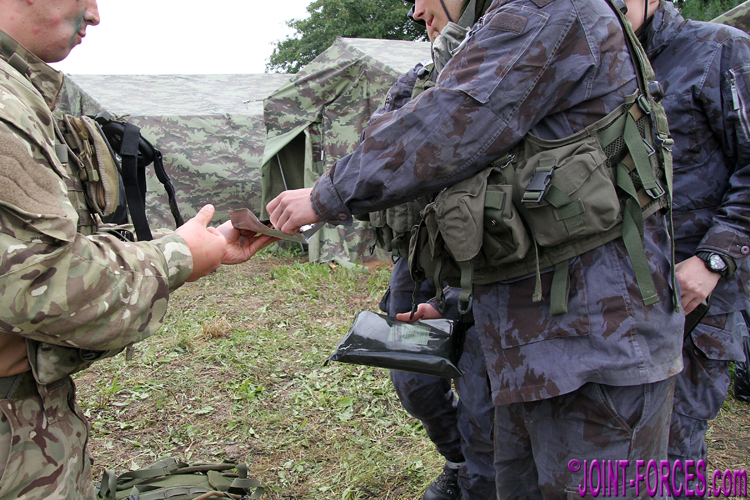
This Lithuanian Dry Food Ration was given to me on Exercise IRON WOLF 2017, where it was widely issued to participating troops, writes Bob Morrison.
~
The Lithuanian Sausasis Maisto Davinys or Dry Food Ration, in many ways similar to the US MRE or Meal Ready to Eat, is issued as a single meal which, with the exception of beverages, requires no water to reconstitute.
This individual meal ration had a calorific value of just under 1,500 kcal, assuming all edible items were consumed, and usually two or three would be issued per day dependent on activity level; normally a male infantry soldier who is fully active in the field could be expected to require around 3,500 kcal each day, or possibly as high as 4,500 kcal in the depths of a Baltic winter, but a soldier in a sedentary role might only need around 2,000 kcal. It should be stressed here that all edible components, including the sugar for the hot beverage and the jam, must be consumed if the recommended daily calorie level and dietary balance are to be maintained.
The sturdy green outer pouch included: a main course (or entrée) in a white card carton onto which an unfolded stove in a card outer was taped; a cellophane pack of hard biscuits; a pouch of nuts; a medium sized resealable plastic bag containing snacks; and a smaller resealable plastic bag containing accessories. Unusually, both a Flameless Ration Heater or FRH and a folding hexamine field cooker with tablets were included meaning the soldier has a method of boiling water for a hot drink separately from heating the food pouch.
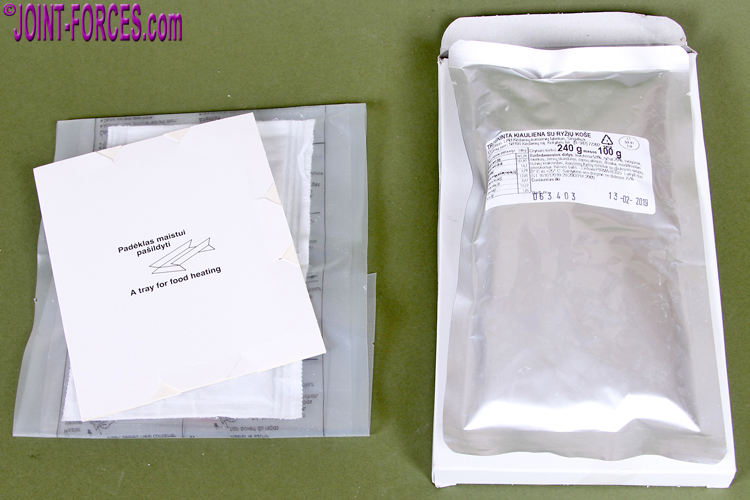
The ration pack I was given by my Lithuanian hosts was Menu (Variantas) Nr.1 and this was the only variant we had tasted until very recently, though we observed several others being consumed during the exercise and from this we were able to determine there are at least ten options. Our main course was described as a pork stew with oatmeal porridge, that is with barley or groats, and although a bit oily it was very tasty indeed and required no seasoning; we also spotted similar beef and chicken stews being consumed from different packs. Shelf life for this ration was three years minimum.
The 240 grammes entrée, of which 100 grammes was meat, was contained in a silver retort pouch inside the white carton which also contained a Flameless Ration Heater. The normal way of heating is to insert the retort pouch into the FRH, add a small amount of water (c.60ml) to activate the chemical pads, slip pouch and heater into the carton and then prop at a slight angle – to ensure water stays inside – and leave for the prescribed time. If you have not used an FRH you may be surprised at how efficient this system is and how much heat is generated.
Inside the smaller of the two bags were a moist towelette, three fuel tablets, a box of matches, a plastic spoon and a zip tie; the latter could be used to securely close the neck of the outer pouch after filling it with your waste. The stove, used for heating water in your canteen mug or mess tin, simply folds into shape as per the instructions. Inside the larger bag could be found a contents sheet, 30g fruit drink powder, 12g pouch of sugar, an English teabag and two 18g bars of good quality dark chocolate in a camo outer.
The final items were a pouch of unsalted nuts, in this case almonds from the US, and a 90g pack of four Polish ‘hard tack’ biscuits. Warning! These biscuits, described as crackers, are sometimes nicknamed panzer tracks and are harder than a very, very hard thing. To ensure teeth remain intact it is better to nibble them gently from the edge, but they are actually quite tasty. If I had to use just two words to describe Lithuanian rations as a whole, these words would be pretty tasty. Maybe that is why several Royal Marines were trying to organise swaps at Endex.
On logistics grounds it is not often that we (i.e. Carl or myself) have the chance to bring home more than one ration pack from a series so each taste test has to be done in isolation, and as when given a choice I usually opt for a main course I think I might like to eat there is a danger that my opinion could be slightly skewed. Since tasting Sausasis Maisto Davinys ( Variantas Nr.1) in late 2017 I have recently been able to source two more packs from the same range, Menus 8 and 10, and in the next article in this series I plan to bring you a brief update.
[ images © Bob Morrison ]

[ images © Bob Morrison ]


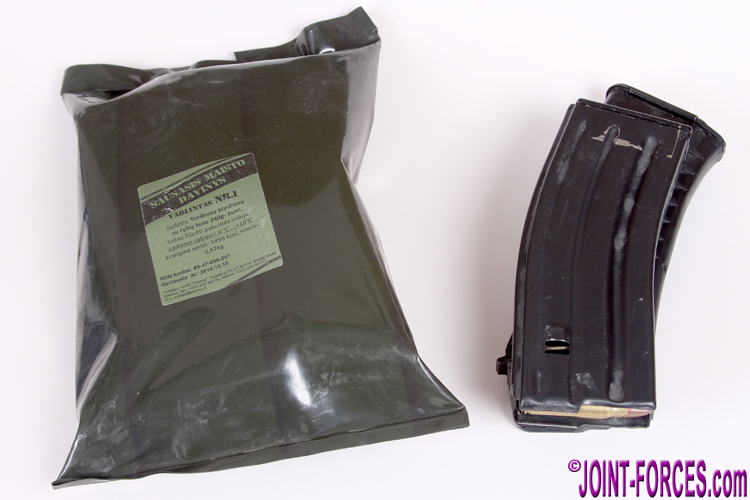


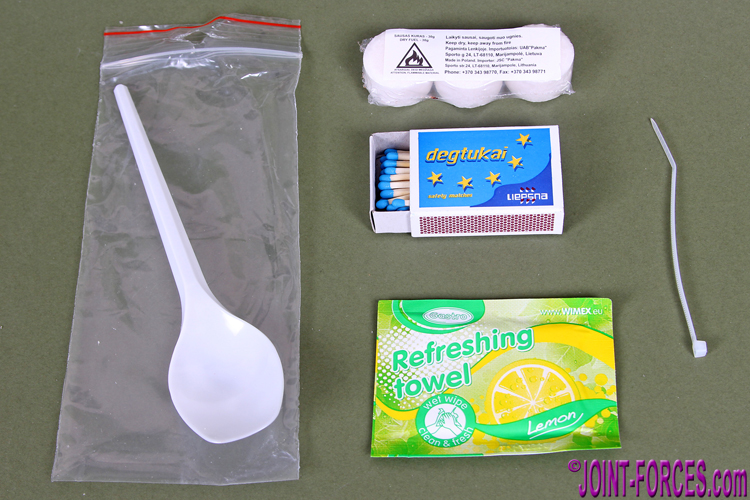
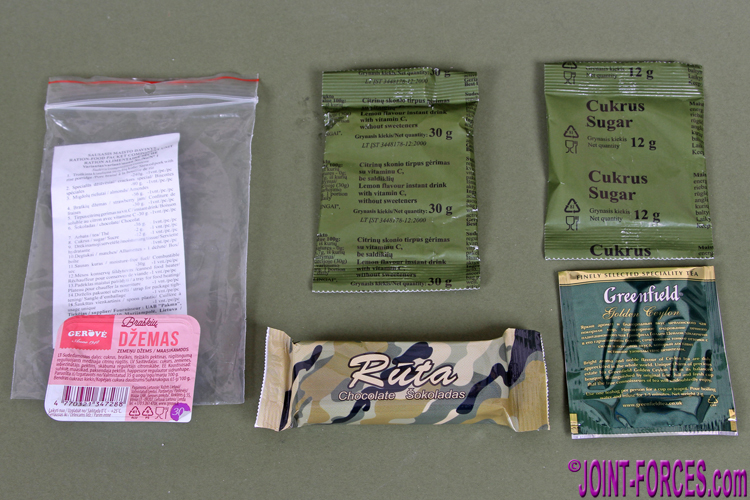
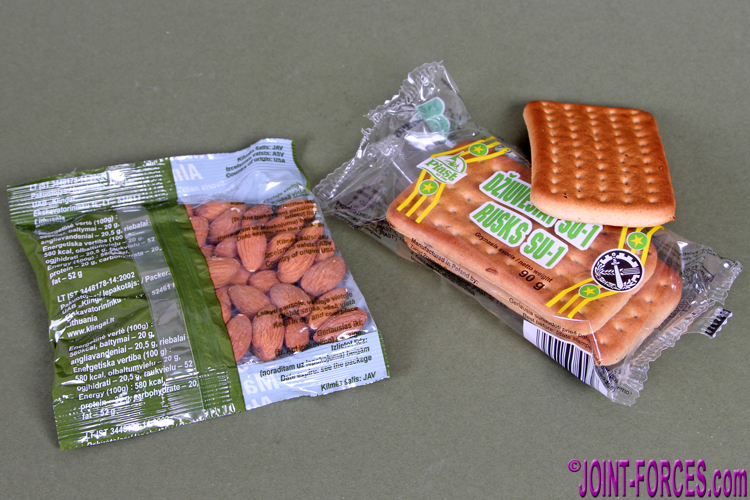

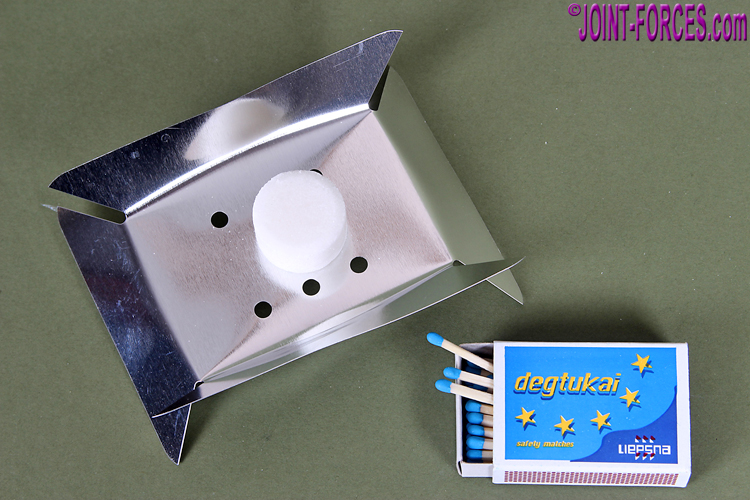
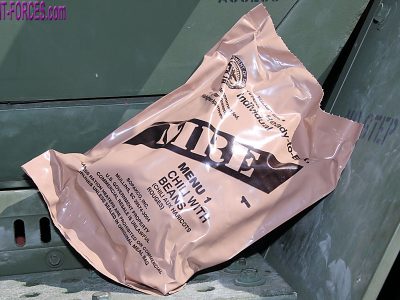
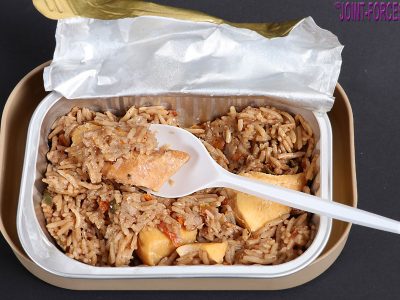
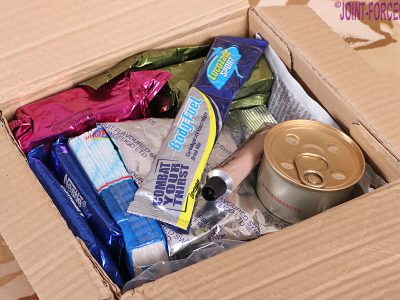
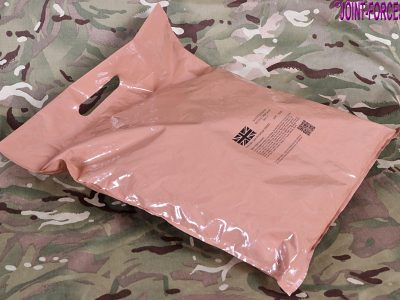



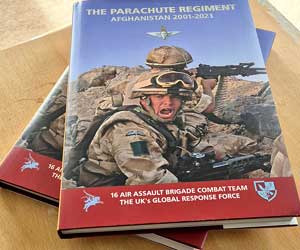


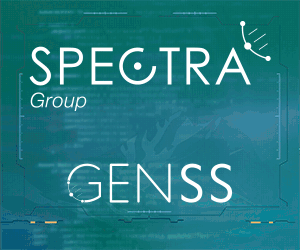




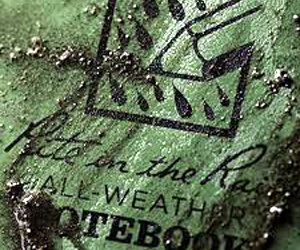

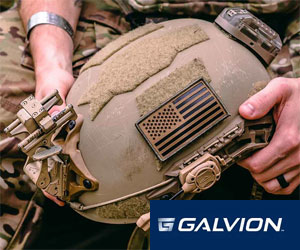
Pingback : FR37a - Lithuanian Dry Food Ration Pt.2 - Joint Forces News